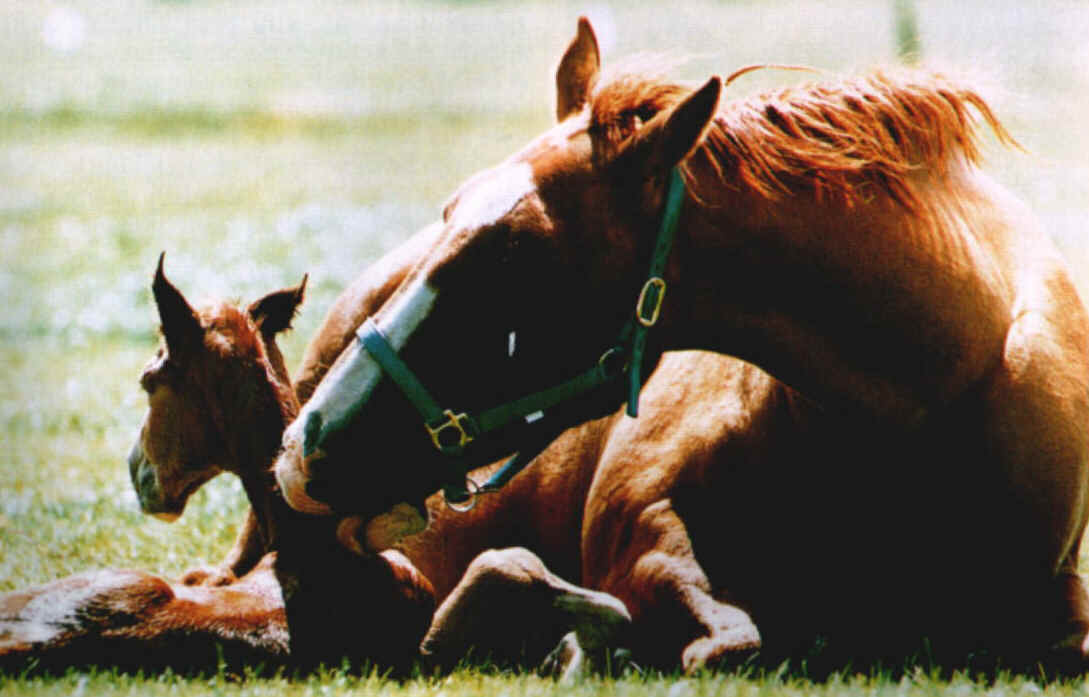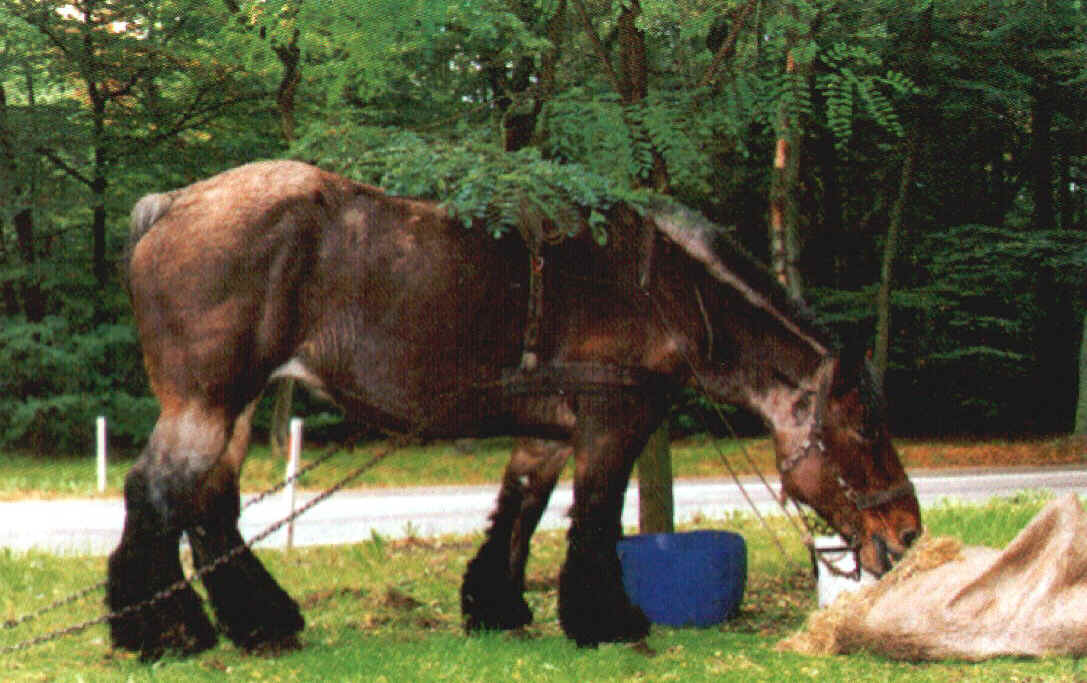



CLEVELAND BAY
Oldest breed of horse in the British Isles. The Cleveland bay was developed in the Cleveland and neighboring Yorkshire regions of England where it descended from the chapman, a horse used for carrying the merchandise of traveling salesmen in the Middle Ages. The genetic characteristics of this horse were later influenced by the Andalusian , Arabian and barbhorses. The Cleveland bay is a tall, plain-looking horse that stands about 163 to 168 cm (about 64 to 66 in, or 16 to 16.5 hands) at the withers (the high part of the back, located between the shoulder blades). The body is long with a broad, deep chest and large hindquarters. Its well-muscled legs are short with large feet well-suited for clay soil. The large head with gentle eyes, a hawklike nose, and large ears resembles that of the Andalusian horse and barb horse.}This horse has a bay (reddish) coat with darker coloring on its back and characteristic black markings on its neck and legs. The mane and tail are thick, and the mane usually is cropped to keep it from becoming tangled.}A strong, versatile horse, the Cleveland bay was prized by generations of farmers as the only horse that could pull a plow through the heavy clay soil of its home region. Recognized for its ability to carry heavy loads over rough ground, the Cleveland bay was considered the best horse in Europe for pulling coaches. This horse also was valued as a sturdy hunter because of its ability to jump out of the clay soil from a near standstill.The Cleveland bay produces excellent offspring when crossed with other breeds, especially hunting and jumping horses. It also was crossed with the Thoroughbred horse to produce the Yorkshire coach horse. Queen Elizabeth II of Great Britain initiated a program to restore the Cleveland bay when this breed almost disappeared after World War II (1939-1945). Many horses in Great Britain's royal stables now are Cleveland bays, and many of London's police horses have a Cleveland bay heritage.
Akhal Teké - Andalusian - Appaloosa - Arabian - Ass - Australian Stock Horse - Bashkir Belgium Heavy Draft horse - Cleveland Bay - Clydesdale - Dutch Warmblood - Gelderlander - Hackney - Holsteiner - Paard (algemeen) - Irish Draught - Lippizaner - Missouri Fox Trotter - Morgan Horse - Mule - Mustang - Oldenburger - Palomino - Percheron - Peruvian Paso - Pinto - Quarter Horse - Selle Francais - Standardbred - Tarpan - Tennessee Walker - Trakehner - Ungulate (onevenhoevigen) - Zebra -